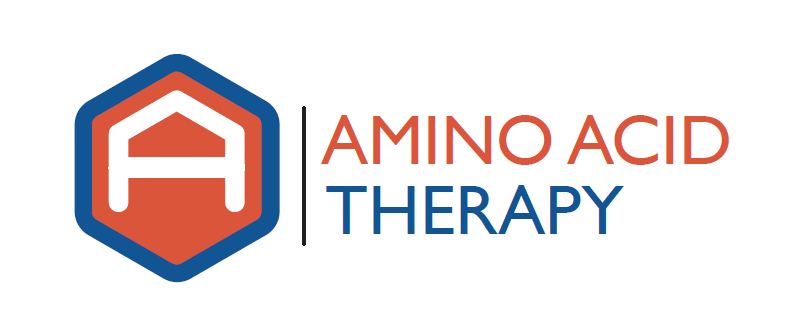by aatadmin | Jul 8, 2014 | Amino Acid Therapy, Neurotransmitters
In Part 1 of this series, we discussed how post-synaptic neuronal damage – as opposed to low levels of neurotransmitters – is the real cause of symptoms related to neurotransmitter imbalance. Part 2 detailed how to overcome that post-synaptic damage to restore proper neurotransmitter function using specialized testing called OCT Assay Interpretation. This post outlines how OCT Assay Interpretation fits into an overall blue-print to restore proper neurotransmitter function using amino acid therapy. (more…)
by aatadmin | Jun 24, 2014 | Amino Acid Therapy, Neurotransmitters
Part 1 of this series discussed post-synaptic neuronal damage as the real cause of symptoms related to neurotransmitter imbalance. This post will detail how to overcome that post-synaptic damage to restore proper neurotransmitter function. (more…)
by aatadmin | Jun 10, 2014 | Amino Acid Therapy, Neurotransmitters
The underlying biochemistry of neurotransmitter imbalances is pretty complex. Likewise, the use of amino acid therapy to correct those imbalances is also not very straightforward. However, in this three part series I will attempt to outline a simple overview of what is happening behind the scenes and why amino acid therapy can help correct the underlying neurotransmitter imbalances that can underlie many conditions.
Behind the scenes
When most people, including most health care professionals think about symptoms associated with neurotransmitter imbalance(s) they think that levels of this or that neurotransmitter are simply too low. In this way of thinking, all that is needed is to raise the levels of neurotransmitter in the synapse; therefore, they take an SSRI, SNRI or other medication to shuffle around neurotransmitters. Some even attempt to raise the neurotransmitter levels by taking amino acid precursors such as 5-HTP or L-tyrosine. This approach may work for a few and/or for a short period of time, but the dismal long-term success of both of these approaches attests to the error in this way of thinking. The underlying cause of symptoms associated with neurotransmitter imbalance in the vast majority of cases isn’t low synaptic levels of serotonin or dopamine; it is damage to the post-synaptic neurons.
Damage to the Post-Synaptic neurons
Damage to the post-synaptic neurons can be due to many things, including neurotoxins, trauma, certain medications and drugs and genetic predisposition, amongst other things. In order to compensate for the decreased electrical flow due to this damage, neurotransmitter levels must be established that are higher than normal. In order for this to occur, serotonin and dopamine precursors must be administered in the proper balance (for each individual) or depletion/further imbalance can occur, as shown in the following illustration.

Illustration taken from Marty Hinz, MD with permission.
Part 2 of this series will explain how to overcome post-synaptic damage.
by aatadmin | Apr 15, 2014 | Amino Acid Therapy, Neurotransmitters
 As we are working with people to correct their underlying neurotransmitter imbalances it is not unusual for people to require several urine tests to help us determine the exact amount of 5-HTP, L-tyrosine, L-dopa and/or necessary cofactors to achieve proper neurotransmitter function. Over the years, it became evident that there was a small minority of people (between 6-8%) that required much higher levels of dopamine than their peers. This group is labeled as having dopamine dominance. (more…)
As we are working with people to correct their underlying neurotransmitter imbalances it is not unusual for people to require several urine tests to help us determine the exact amount of 5-HTP, L-tyrosine, L-dopa and/or necessary cofactors to achieve proper neurotransmitter function. Over the years, it became evident that there was a small minority of people (between 6-8%) that required much higher levels of dopamine than their peers. This group is labeled as having dopamine dominance. (more…)
by aatadmin | Apr 1, 2014 | Amino Acid Therapy, Neurotransmitters
 Neurotransmitter imbalances can cause an incredibly wide range of health issues. The reason is clear: neurotransmitters are chemical messengers that relay information between the brain and the rest of the body; if neurotransmitter imbalances are present, improper information gets sent. In essence, the wiring of the body gets fouled up and this can have a very wide range of effects. (more…)
Neurotransmitter imbalances can cause an incredibly wide range of health issues. The reason is clear: neurotransmitters are chemical messengers that relay information between the brain and the rest of the body; if neurotransmitter imbalances are present, improper information gets sent. In essence, the wiring of the body gets fouled up and this can have a very wide range of effects. (more…)
by aatadmin | Mar 18, 2014 | Amino Acid Therapy, Neurotransmitters
 Amino acid therapy involves providing the body with the necessary building blocks to restore proper neurotransmitter function. There are many disorders associated with neurotransmitter imbalance. The conventional approach to many of these disorders – including depression, anxiety, migraines, insomnia and ADHD, is to use medications that in some way alter neurotransmitter function. (more…)
Amino acid therapy involves providing the body with the necessary building blocks to restore proper neurotransmitter function. There are many disorders associated with neurotransmitter imbalance. The conventional approach to many of these disorders – including depression, anxiety, migraines, insomnia and ADHD, is to use medications that in some way alter neurotransmitter function. (more…)





